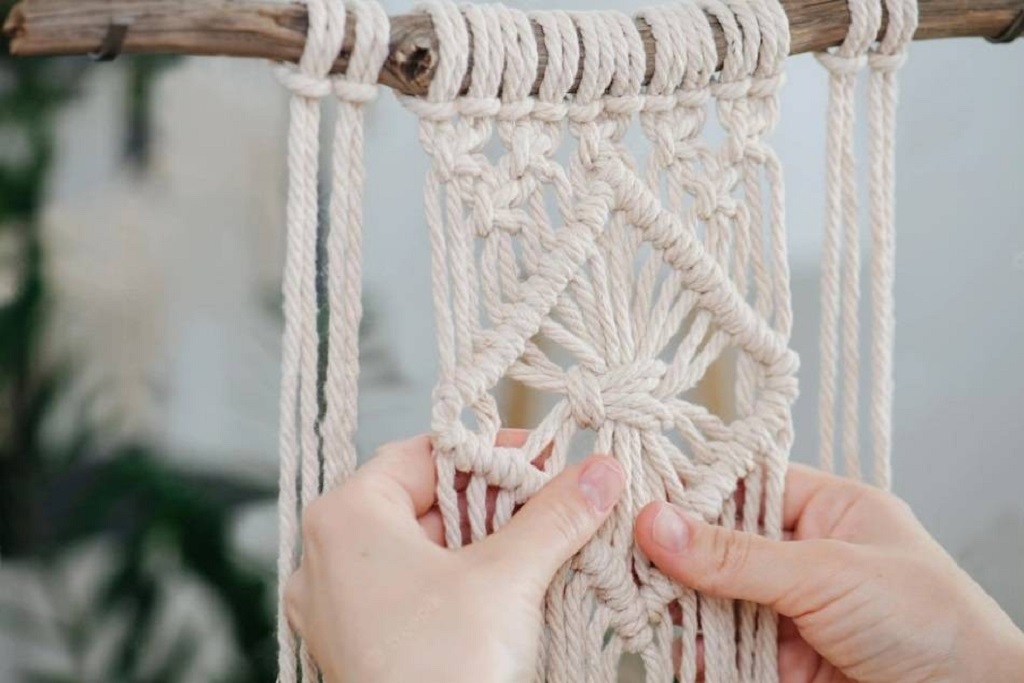
Tree Pulling Made Easy: Must-Have Ropes for DIY and Professional Use
Imagine standing in your backyard, staring at a leaning tree that’s threatening your fence or a dead oak that needs to come down before it becomes a hazard. The task feels daunting, but with the right ropes and techniques, tree pulling can be safe, efficient, and even satisfying. Whether you’re a homeowner tackling a DIY project or a professional arborist managing complex tree removal, choosing the right rope is the foundation of success. In this comprehensive guide, we’ll explore the must-have ropes for tree pulling, key techniques, and safety tips to ensure your project goes smoothly. Let’s dive into the world of arborist ropes and make tree pulling easier than ever.
Contents at a Glance
ToggleWhy the Right Rope Matters for Tree Pulling
Tree pulling is a high-stakes task that requires precision and safety. The wrong rope can snap under pressure, leading to dangerous situations or property damage. A high-quality rope, on the other hand, provides the strength, durability, and control needed to guide a tree safely to the ground. For DIYers, the right rope can make a weekend project manageable, while professionals rely on specialized ropes to handle heavy loads and complex rigging setups. Understanding the types of ropes and their applications is key to achieving safe and effective results.
Key Factors in Choosing a Tree Pulling Rope
When selecting a rope for tree pulling, several factors come into play:
- Tensile Strength: The rope must withstand the weight and force of the tree. A rope with a minimum breaking strength (MBS) of at least 5,000 pounds is recommended for small to medium trees, while larger trees may require ropes with 10,000 pounds or more.
- Stretch: Static ropes with minimal stretch (less than 5%) are ideal for precise control, while dynamic ropes with more stretch are better for absorbing shock during rigging.
- Diameter: A rope’s thickness affects grip and durability. For most tree pulling, 1/2-inch to 3/4-inch ropes strike a balance between strength and ease of handling.
- Material: Polyester and nylon are common choices due to their durability, abrasion resistance, and ability to handle rough bark. Polyester is less stretchy, making it ideal for static applications.
- Weave Structure: Braided or kernmantle ropes provide strength and flexibility, while twisted ropes offer durability for heavy-duty tasks.
- Visibility: Brightly colored ropes, like neon green or orange, improve safety by ensuring visibility in dense canopies or low-light conditions.
By considering these factors, you can choose a rope that matches the specific demands of your tree pulling project.
Types of Ropes for Tree Pulling
Arborists and DIYers use a variety of ropes, each designed for specific tasks. Here’s a breakdown of the main types and their applications:
-
Static Ropes
Static ropes, often called bull ropes, are designed for minimal stretch, making them ideal for climbing and pulling tasks where precision is critical. These ropes maintain tension without bouncing, which is essential when guiding a tree in a specific direction. Popular options include:
- Samson Stable Braid: A double-braided polyester rope with high strength (up to 10,000 pounds MBS) and low stretch, perfect for pulling medium to large trees.
- Yale Cordage Imori: A 24-strand rope with a polyester core, offering excellent knot retention and durability for professional use.
Best Use: Felling trees with precise directional control or climbing for pruning.
-
Dynamic Ropes
Dynamic ropes stretch under load, making them suitable for rigging tasks where shock absorption is needed, such as lowering heavy branches. They’re less common for pulling entire trees but are invaluable for controlled descents.
- Teufelberger Multiline II: A polyester-polyolefin composite with moderate stretch, ideal for rigging and light pulling.
- Sterling Atlas Rigging Line: With an 18,000-pound MBS, this dynamic rope excels in heavy-duty rigging scenarios.
Best Use: Lowering branches or pulling trees with a lean to absorb shock.
-
Throw Lines
Throw lines are lightweight, thin ropes used to set up climbing or rigging ropes in high branches. They’re not strong enough for pulling but are essential for positioning heavier ropes.
- Notch Throw Line: A 1.8mm polyethylene line with high visibility, perfect for threading over branches.
Best Use: Setting up rigging systems or climbing lines in tall trees.
- Specialty Ropes
Some ropes combine features for versatility. For example, the Arbor-Plex is a 12-strand rope with a polyolefin core and polyester jacket, offering lightweight strength for both climbing and light rigging.
Must-Have Ropes for DIY Tree Pulling
For homeowners tackling tree removal, simplicity and safety are key. Here are top rope recommendations for DIYers:
- Mophorn 1/2-Inch Polyester Rope: With a 5,875-pound MBS, this low-stretch rope is ideal for small to medium trees. Its abrasion-resistant polyester cover ensures durability.
- Giantex 150-Foot Polyester Rope: A braided rope with a 5,953-pound working load limit, offering a soft feel for easy handling and UV resistance for outdoor use.
- Maasdam Rope Puller Kit: Combines a 1/2-inch rope with a 10:1 mechanical advantage puller, perfect for solo DIYers needing extra leverage.
Pro Tip: Always pair your rope with a sturdy anchor point, like another tree or a vehicle, and use knots like the Bowline or Double Fisherman’s for secure connections.
Professional-Grade Ropes for Arborists
Professionals need ropes that can handle heavy loads and frequent use. Here are some top picks:
- CEKKIENA 3/4-Inch Bull Rope: A high-strength polyester rope with an 18,000-pound MBS, designed for large tree felling and rigging.
- Samson Tree-Master: A 3-strand polyester rope with excellent abrasion resistance, ideal for rigging and pulling in demanding conditions.
- Blue Ox 12-Strand: A 1/2-inch rope with a 7,000-pound MBS, offering a balance of affordability and performance for professional arborists.
Pro Tip: Use a rigging block or pulley to reduce strain on the rope and improve control during heavy pulls.
Essential Techniques for Safe Tree Pulling
Using the right rope is only half the equation—proper techniques are critical for safety and efficiency. Here are key methods to master:
- Positive Rigging
Positive rigging involves anchoring the rope above the load, allowing you to tension it before cutting. This method reduces strain on the rope and minimizes free-fall risks.
- Steps: Secure the rope to a strong branch or another tree, run it through a rigging block, and tension it before making the final cut.
- Benefits: Greater control and reduced equipment wear.
- Negative Rigging
Negative rigging places the anchor below the load, allowing branches to free-fall briefly before the rope catches them. This method is less preferred due to higher shock loads but is useful when no upper anchor is available.
- Knots for Tree Pulling
Mastering knots is essential for secure connections:
- Bowline Knot: Creates a fixed loop for anchoring, easy to untie after heavy loads.
- Clove Hitch: Ideal for attaching ropes to trunks or carabiners, quick to release.
- Double Fisherman’s Knot: Joins two ropes securely for extended reach.
Practice Tip: Test all knots before applying load to ensure they hold under tension.
- Using a Come-Along or Winch
For extra pulling power, a come-along or winch can amplify force. The Maasdam Rope Puller, for example, offers a 10:1 mechanical advantage, making it easier to fell large trees with minimal manpower.
Safety Tips for Tree Pulling
Safety is non-negotiable when pulling trees. Follow these precautions:
- Inspect Equipment: Check ropes for fraying, cuts, or sheath slippage before use.
- Wear PPE: Use gloves, a helmet, eye protection, and non-slip boots to protect against debris and rope burn.
- Choose a Safe Anchor: Ensure the anchor point (e.g., another tree or vehicle) can handle the load.
- Avoid Barber Chairing: Prevent tree splitting by using proper felling cuts and pre-tensioning the rope.
- Work with a Spotter: Have someone monitor the tree’s movement and warn of hazards.
Warning: If you’re inexperienced or dealing with large trees near power lines, hire a professional arborist to avoid risks.
Read More Also: How to Choose the Right Decorative Rope for Outdoor Spaces
FAQs About Tree Pulling Ropes
What is the best rope for pulling down a tree?
The best rope depends on the tree’s size and condition. For small to medium trees, a 1/2-inch polyester rope with a 5,000-pound MBS works well. For larger trees, opt for a 3/4-inch bull rope with an 18,000-pound MBS, like the CEKKIENA or Sterling Atlas.
Can I use a nylon rope for tree pulling?
Nylon ropes are strong but stretchy, making them less ideal for precise pulling. Polyester ropes, with lower stretch, are better suited for most tree pulling tasks.
How do I know if my rope is strong enough?
Check the rope’s MBS and ensure it’s at least three times the estimated weight of the tree or load. For example, a 10,000-pound tree requires a rope with at least a 30,000-pound MBS for safety.
What knots should I use for tree pulling?
The Bowline, Clove Hitch, and Double Fisherman’s Knot are essential for secure anchoring and joining ropes. Practice these knots to ensure they hold under load.
Can I pull a tree without professional help?
DIY tree pulling is possible for small trees with proper equipment and techniques. However, for large trees or those near structures, consult a professional to avoid accidents.
Read More Also: DIY Wall Art with Decorative Rope: Simple and Stylish Ideas
Conclusion: Choose the Right Rope and Pull with Confidence
Tree pulling doesn’t have to be intimidating. By selecting the right rope—whether a static bull rope for precision or a dynamic rope for shock absorption—you can tackle tree removal with confidence. Combine high-quality ropes with proper techniques, like positive rigging and secure knots, to ensure safety and efficiency. For DIYers, affordable options like the Mophorn or Giantex ropes are excellent starting points, while professionals can rely on heavy-duty choices like the CEKKIENA or Samson Tree-Master.
Ready to get started? Assess your tree’s size, choose a rope with adequate strength, and practice your knots. If you’re unsure or dealing with a complex job, don’t hesitate to contact a professional arborist. Share your tree pulling experiences or ask questions in the comments below—we’d love to hear from you! For more tips on tree care and equipment, explore our blog or check out trusted suppliers like TreeStuff or Knot & Rope Supply.






